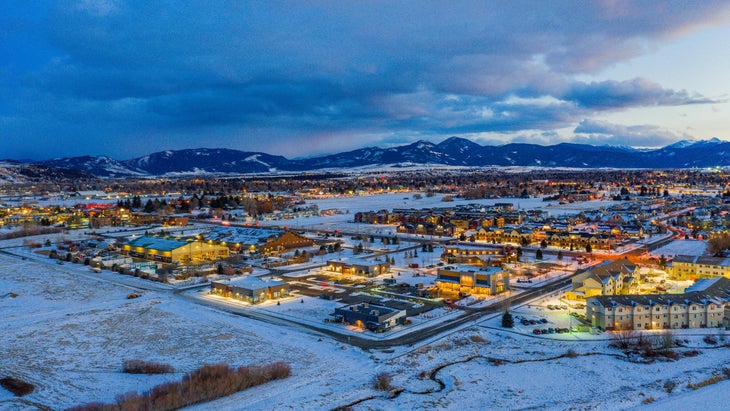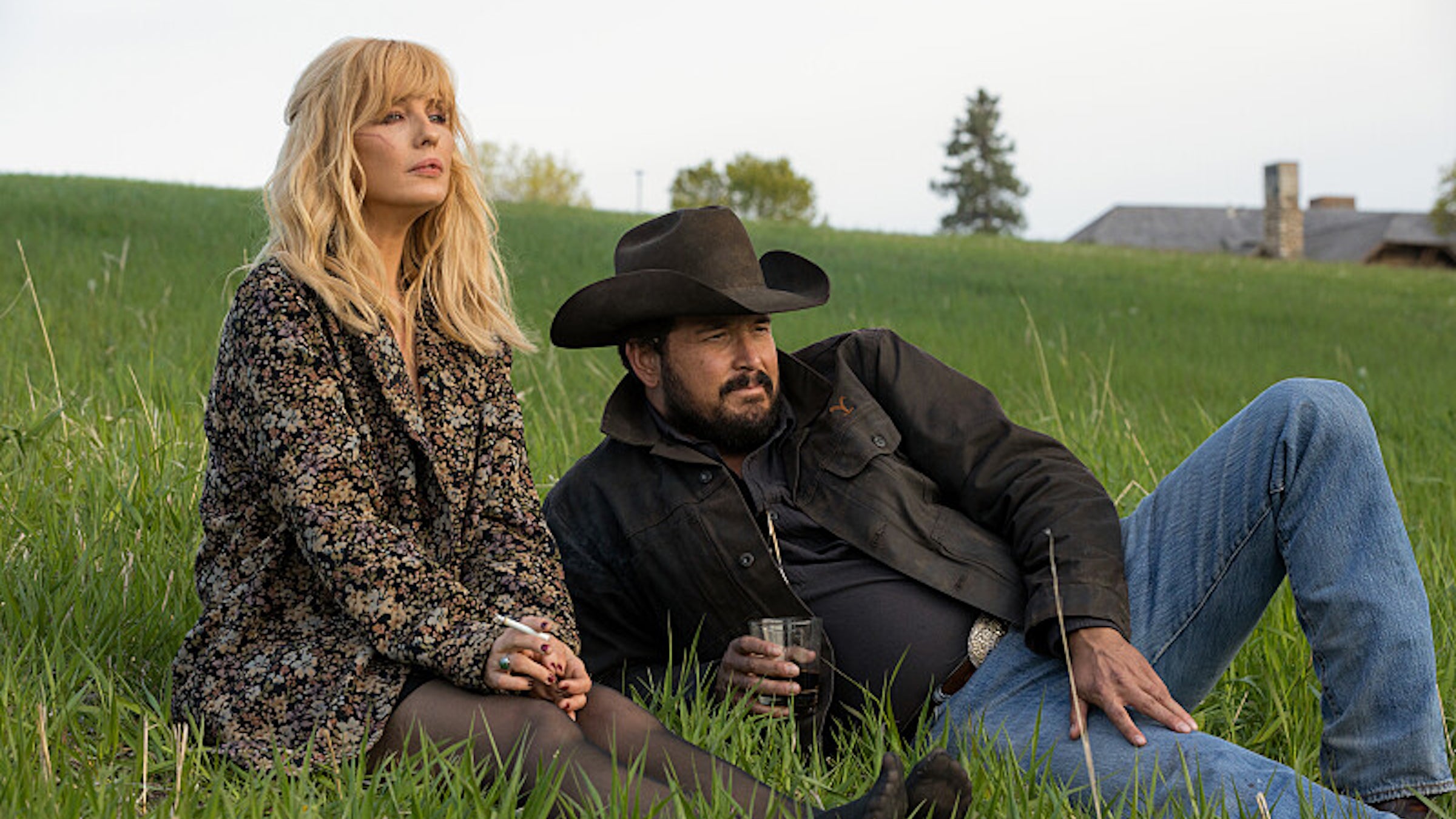I started watching the hugely popular TV series Yellowstone in 2020, during the height of the COVID pandemic. By then, there were multiple seasons available, and my husband and I had nothing but time. We were hooked.
We’re not the only ones. The second half of Season 5, which came out on November 11, saw more than . Only NFL football had than Yellowstone last season. Character names like Rip and Dutton have seen exponential increases in their use for newborn babies. And, as the recently reported, Americans really want their own piece of the Yellowstone landscape, and the show may be partly to blame.
Which got me thinking: How much of the show is based in reality, and is it really affecting what’s happening in the West? The show is over-the-top melodrama, but writer and co-creator Taylor Sheridan obviously chose real-life conflicts in Montana and other western states to base the plot on. Here are four ways the show bears more resemblance to reality than a casual fan might realize.
1. The Series Suggests Big Developers Will Stop at Nothing to Broker Land “Deals”—That May Be True.
In Yellowstone, the Duttons are constantly navigating nefarious plots to seize their ranch by out-of-state land development interests. Some, it seems, will stop at nothing to dispossess the family in order to capitalize on the value of their land, creating ridiculously violent scenes.
In real life, there is example after example of complicated land deals in Montana and the West in which developments for the wealthy take up premier land. The Yellowstone Club, which is just north of Yellowstone National Park in Big Sky, Montana, has been a bastion for the ultra-wealthy since it opened in the late nineties. Boasting “private powder” and ruthlessly protected privacy for its members, among other features, the Club was created through swaps with the Forest Service, which turned a checkerboard of public and private land into consolidated acreage for the Club’s founder, Tim Blixseth.
While the Yellowstone Club is already controversial among Montanans (few of whom can afford the steep costs of membership, which involve a , annual club dues of $36,000, and annual property owners association dues of $10,000), it’s also trying to expand into a contentious area of the Crazy Mountains. As Ben Ryder Howe reported in New York magazine’s , a group of billionaires associated with the Club has been maneuvering to privatize contested swaths of land that yield access to the Crazies for some time. The Forest Service, ranchers, the Native Crow, the general public, and the Yellowstone Club all seem to have a stake in the outcome.

2. Places Like Bozeman, Montana, Really Are Becoming Overrun with Furs and Fancy Cars.
I know folks who live in Bozeman, and I’ve read plenty of the reporting we’ve done here at ���ϳԹ��� (and elsewhere) related to life in mountain towns like Bozeman, where affordable housing shortages, the aftermath of a global pandemic, remote work, and the glamorization of mountain lifestyles have created a rich broth of income inequality that is apparent as you navigate the city.
Writing in 2022 for ���ϳԹ���, Maggie Slepian, who has been based in Bozeman for more than a decade, noted the visual changes on the town and the landscape that were being wrought by the influx of new, wealthy, second-home residents. Watching Yellowstone, some of the fashions my beloved Beth Dutton opted for on her runs to town struck me as a bit much even for her unparalleled character. (Silky sheaths beneath a luxe full-length fur coat, anyone?)
Sartorial considerations aside, affordability remains a major issue, and Yellowstone focuses primarily on the more glamorous troubles a family that owns the largest ranch in the area would face, not on the person being priced out of their apartment or the family acknowledging that they’ll never be able to swing it for a single family home.
3. The Duttons Struggle to Afford Their Ranch. So Do Many Real Families.
In the years since Yellowstone premiered, a number of outlets have interviewed real generational ranchers in Montana to get a sense of their view of the show. The dynamics among the family itself often get highlighted as one of the most believable elements. In an Variety from 2023, a third-generation rancher from Idaho, Jesse Jarvis, highlights the familial dysfunction as one of the most realistic elements of the show.
The Duttons’ interpersonal conflicts are largely driven by the struggle to afford their 700,000-acre ranch. In real life, the total number of farms and ranches in Montana is down 10.3 percent from 2017, from 2022. And with continued interest from developers to obtain large tracts of land in the area, it seems likely land and home prices will continue to rise. Recent data from the indicates a consistent increase of cropland value in Montana from 2012 on. And this is to say nothing of the capital needed to operate a large-scale ranch.
4. Indigenous Land Is Being Acquired and Compromised by Development.
Fans of Yellowstone see complex dynamics of power and history at play in the dealings of the Duttons and others with the fictional Broken Rock Indian Tribe. As the screw twists and turns, the Broken Rock, led on the show by the Chairman Thomas Rainwater, find themselves on both the dealing and receiving ends of bad land deals and villainous behavior from local and out-of-state actors. This contemporary dispossession of Indigenous people fits into the long and violent history in which legal and extralegal measures are taken by those in power to forcibly remove Indigenous inhabitants from their land.
To cite a recent real example, you can look again to the Crazy Mountains in Montana. The Crazies are filled with significant and sacred sites for the Native Crow. In the current proposal for there, private land prevents the Crow from visiting many of these sites without permission from the landowner. ���ܳٲ������’s reporting on the Yaak Valley offers another illustrative example of these dynamics.
There’s likely much more to say about the real power dynamics in the Mountain West and the fights for public lands that overlap with some of what you see on the small screen in Tyler Sheridan’s fantasy universe. As they say, truth can really be stranger than fiction.
Ryleigh Nucilli got a master’s degree and half of a PhD in literature and culture from the University of Oregon before leaving to pursue a career in digital media. She loves reading and writing about the intersection of popular media and culture.


